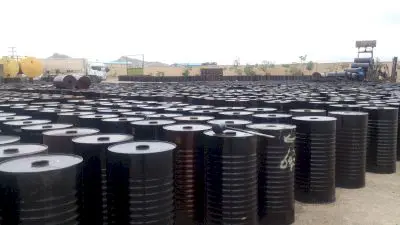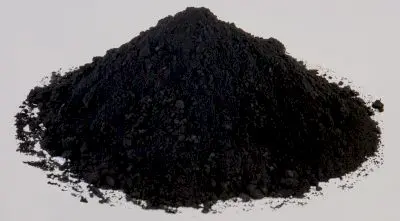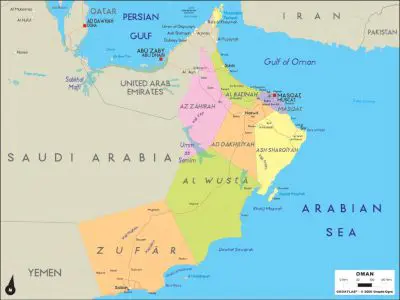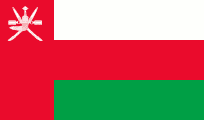Petroleum Prices in Oman
Oman has two parts. A small part of Oman is located in the southern part of the Strait of Hormuz, which is called Musandam. According to the International Journal of Oil and Gas, there are over 6,000 petroleum products. Muscat is located on the Arabian Peninsula with long, hot summers like any other Middle Eastern country. Meanwhile, the national companies distributing petroleum products in the Middle East, using the existing experts in the field
Add your import and export orders to this list
Warning: Undefined variable $formTitle in /home/anbar/domains/anbar.asia/anbar/inc/html/desktop/orderform.php on line 10
Warning: Undefined variable $marketName in /home/anbar/domains/anbar.asia/anbar/inc/html/desktop/orderform.php on line 12
Warning: Undefined variable $location in /home/anbar/domains/anbar.asia/anbar/inc/html/desktop/orderform.php on line 12
If you want to trade in the , please join in Anbar Asia. Your order will be shown here, so the traders of contact you

Oman is one of the southern neighbors of Iran. The official language in Oman, like other countries in the Persian Gulf, is Arabic. Asphalt, which is used to make roads and roofs flat or impenetrable, is one of the most widely used petroleum products. Access to free waters from the Oman Sea providing a good position for export to Oman like other Persian Gulf countries. In principle, the applicant countries for the import and purchase of petroleum products in the Middle East
- Oman Bitumen Market
- Oman Engine Oil Market
- Oman Paraffin Market
- Oman Petroleum Coke Market
- Oman Base Oil Market

In refineries, different parts of crude oil are separated and other usable products are introduced into production. According to the International Journal of Oil and Gas, there are over 6,000 petroleum products, most of which are used in our daily lives, and perhaps few people know about their relationship to oil.
Read More ...
The Achaemenid dynasty used bitumen for sealing and waterproofing the palace with the grandeur of Persepolis. Remains of it can be seen in the historical complex of Persepolis. Ancient Susa artists used a mixture of bitumen and heated it to obtain a composition that was very similar to stone. They used this material to make various objects as well as to make sculptures and fossils.
Read More ...
Petroleum coke (Petcoke) is the final carbon-rich solid material obtained from the oil refining process and is a group of fuels known as coke. Petroleum coke is specifically obtained from a final cracking process, which is considered a chemical engineering process, and the hydrocarbons of the oil chains are divided into shorter chains in a section called the coke unit.
Read More ...
This part is separated from the mainland. The eclipse is now called Madha, which is surrounded by the United Arab Emirates. Oman's current birthplace has been called by various names throughout history and has undergone changes. In some texts, Omana and Oman are also named. Oman is a non-Arabic word, but its most prominent old letters were Megan and its alterations were Majan.
Read More ...Oman holds 23 trillion cubic feet (Tcf) of proven gas reserves as of 2017, ranking 28th in the world and accounting for about 0% of the world's total natural gas reserves of 6,923 Tcf. Oman has proven reserves equivalent to 29. Oil & Gas sector in Oman . With its oilfields maturing at a rapid pace, Petroleum Development Oman (PDO) is introducing a range of increasingly complex technologies to extract oil. For the last five decades oil and gas has been Oman’s key economic driver and is likely to remain so for the foreseeable future. Of Oman’s estimated potential of over 60 billion barrels of oil in place only 8. With current levels of oil price and new technology constantly becoming available, Oman will be able to develop more fields. Oman has signed a number of exploration agreements recently, including four offshore blocks. Oman’s long-term sector strategy extends all the way to the year 2044 and even beyond. The oil and gas sector is one of the most mature industries in the region, with the national oil company Petroleum Development Oman (PDO) focusing on enhanced oil recovery (EOR) schemes to maintain output at depleting fields. Operators in Oman are expected to award about $1. pipeline from Saih Nihayda in central Oman to Duqm which to cater to demand at DSEZ. $96m Water flooding facilities at the two PDO oil fields in Central Oman. Promoters (50/50): International Petroleum Investment Company (IPIC), UAE and Oman Oil Company. Oman plans to invest more than $40 billion in gas exploration and production activities over the next 10 years. Further demonstrating the ongoing push by the Government to attract new investment in hydrocarbon sector, in November 2012 the Ministry of Oil and Gas invited bids for exploration licenses in a total of seven blocks offshore and onshore Oman; bids are due in by January 31, 2013. PetroTel (USA) last year received a license for block 40 offshore Musandam in the north of Oman. Another production sharing agreement was signed with Allied Petroleum Exploration (APEX) Canada, for the development of block 36 in Dhofar region. Latest export opportunities – Oman . Several major end-users as well as the Omani Commercial Law encourage vendors to engage a registered local agent. The UAE is Oman’s largest trade partner accounting for almost 30% of the trade volume. UAE exports include direct imports by Omani traders as well as re-exports by UAE traders. More about doing business in Oman .
Read More ...
Oman is the largest oil and natural gas producer in the Middle East that is not a member of the Organization of the Petroleum Exporting Countries (OPEC). Located on the Arabian Peninsula, Oman’s proximity to the Arabian Sea, Gulf of Oman, and Persian Gulf grant it access to some of the most important energy corridors in the world, enhancing Oman’s position in the global energy supply chain (Figure 1). Oman plans to capitalize on this strategic location by constructing a modern oil refining and storage complex near Ad Duqm, Oman, which lies outside the Strait of Hormuz (an important oil transit chokepoint). Like many countries in the Middle East, Oman is highly dependent on its hydrocarbons sector. The ninth version of the Oman 5–Year Plan released in 2016, was created in the context of sustained low oil prices, and aims to enhance the economic by adopting a set of sectoral objectives, policies, and mechanisms that will increase non–oil revenue. Oman’s program is largely aimed at expanding industries such as fertilizer, aluminum, power generation, and water desalination. However, with rising oil and natural gas production levels and a growing petrochemical relies on liquefied petroleum gases (LPG) and natural gas liquids country is unlikely to significantly alter its dependence on hydrocarbons as a major revenue stream in the short term. The Ministry of Oil and Gas coordinates the role in Oman’s hydrocarbon sectors. Final approval on policy and investment, however, rests with the Sultan of Oman. The Petroleum Development Oman (PDO) holds most of Oman’s oil reserves and operates the largest block, Block 6. [4] The Oman Oil Company (OOC) is responsible for energy investments both inside and outside of Oman. The Oman Oil Refineries and Petroleum Industries Company (ORPIC) is owned by the Government and by the OOC. ORPIC controls the refining sector and owns both of Oman’s operating refineries, Sohar and Mina firm, Occidental Petroleum (Oxy), is the operator after PDO and has the largest presence of any foreign firm in Oman. Oxy operates mainly in northern Oman at Block 62 and Block 9, and in the Mukhaizna field in the south. Daleel Petroleum, which is a 50/50 joint venture between Omani private firm Petrogas and Chinese state firm China National Petroleum Corporation (CNPC), operates Block 5. Enhanced oil recovery techniques helped Oman’s oil production rebound from a decline in the early 2000s. Oman is the largest oil producer in the Middle East that is not a member of the Organization of the Petroleum Exporting Countries (OPEC). Oman’s annual petroleum and other liquids production first peaked at 972,000 barrels per day (b/d) in 2000 but dropped to 715,000 b/d by 2007. Oman successfully reversed that decline, and total oil production has risen, hitting a new peak of a little more than 1 million b/d in 2016. In 2017, Oman Oil Company Exploration and Production (OOCEP) announced three significant oil and natural gas discoveries in Block 60. Oman’s ability to increase its oil and natural gas production relies heavily on innovative extraction technologies such as enhanced oil recovery (EOR). Several EOR techniques are already used in Oman, including polymer, miscible, steam injection, and solar techniques. [6] Because of the relatively high cost of production in the country, Oman’s government offers incentives to international oil companies (IOCs) for exploration and development activities related to the hydrocarbons. Given the technical difficulties involved in oil production, the contract terms for IOCs have become more favorable in Oman than in other countries in the region, and certain projects have allowed significant equity stakes. Block 6, located in central and southern Oman and operated by PDO, is the center of current EOR operations. Solar EOR at in southern Oman, completed by GlassPoint Solar in 2012 and commissioned in early 2013, was the first solar EOR project in the Middle East. Oman is not a major refined petroleum product producer, although it has plans to expand the refining and storage sectors. Oman aims to capitalize on its strategic location on the Arabian Peninsula by expanding its refining capabilities there. Oman has two refineries, Mina al Fahal and Sohar. The OOC and Kuwait Petroleum International (KPI) have signed a partnership agreement for their Ad Duqm Refinery and Petrochemical Industries Company (DRPIC) joint venture to build two facilities: a 230,000 b/d export refinery in a special economic zone under development at Ad Duqm on the Arabian Sea coast of central Oman and a 200 million barrel crude oil storage terminal at Ras Markaz. Both Oman and Kuwait will provide crude oil feedstock. Oman is an important oil exporter, particularly to Asian markets. Oman’s only export crude oil stream is the Oman blend, a and sour (high sulfur– 1. Oman is an important crude oil exporter, particularly to Asian markets. China is Oman’s largest export market, and Taiwan receives the volume. Oman does not have any international oil pipelines, although plans are in place to expand the domestic pipeline The Muscat Sohar Pipeline Project (MSPP), built by ORPIC, began commercial operations in 2017. The 180–mile refined product pipeline connects the Mina al–Fahal and Sohar refineries with a new storage terminal near Muscat airport and reduces tanker traffic between the two coastal facilities. [17] ORPIC says that the 93,000 b/d capacity MSPP will handle more than 50% of Oman’s products demand. The greatest growth potential for Oman’s natural gas production is in the field, Block 61. PDO has an even greater presence in the natural gas sector than it does in the oil sector, accounting for nearly all of Oman’s natural gas supply. Smaller contributions came from Occidental Petroleum, Oman’s largest independent oil producer, and PTTEP. The Oman Gas Company (OGC) directs the natural gas transmission and distribution systems. The OGC is a joint venture between the Omani Ministry of Oil and Gas (80%) and OOC (20%). Oman Liquefied Natural Gas (Oman by a consortium including the government, Shell, and all liquefied natural gas (LNG) activities in Oman through its three liquefaction trains in Qalhat near Sur. Oman’s potential for natural gas production growth may be substantial, supported by promising developments in several new projects. Natural gas is becoming a key source in energy to the Omani economy with its increased focus on economic away from oil. [20] The Central Bank of Oman estimates that demand for natural gas will continue to rise going forward as a result of the number of industries coming online combined with rising demand in the electric power sector. Oman consumes more than 70% of the natural gas it produces. The greatest growth potential for Oman’s natural gas production is in the field in BP’s Block 61. Phase 1 production from the field, which in 2017, is expected to significantly ease the pressure on Oman’s natural gas supplies. 5 billion cubic feet per day (Bcf/d), equivalent to about 40% of Oman’s current total domestic gas production. It will also contribute to easing Oman’s overall natural gas demand. Oman is a member of the Gas Exporting Countries Forum (GECF) and exports natural gas as LNG through its Oman LNG facilities near Sur in the Gulf of Oman. Oman’s natural gas sector grew in importance during the past two decades, which was largely the result of two LNG trains that opened in 2000 at the LNG complex at Qalhat, near Sur, operated by Oman LNG (a joint venture between PDO and other shareholders). Qalhat merged into Oman LNG in 2013. Its main shareholders are the Omani state (51%) and Shell Gas B. South Korea is the primary buyer of Oman LNG. Oman’s LNG exports have increasingly been under pressure as rising domestic consumption has cut into volumes available for export. [28] Khazzan volumes are primarily designated for domestic consumption, and excess volumes are exported from Oman’s LNG facilities. Oman LNG’s 2016 Annual Report reported the sales of two spot cargoes to Kuwait and Jordan as representing "new departures for our company" by exporting to new geographic destinations. Oman has one international natural gas Dolphin runs from Qatar to Oman through the United Arab Emirates (UAE). Oman is not a major importer of natural gas, although the country imports from Qatar through the Dolphin Pipeline to meet domestic demand. In March 2014, Oman signed a memorandum of understanding with Iran on a natural gas import contract. The deal will deliver approximately 353 million cubic feet of natural gas per year through a new pipeline under the Gulf of Oman, much of which is slated to be as LNG. Oman’s electricity sector relies heavily on domestic natural gas to fuel electricity generation. The Authority for Electricity Regulation Oman (AER Oman) regulates the electricity and associated water sectors. The Oman Power and Water Procurement Company (OPWP) is the planning body for power supplies in Oman, and the Oman Electricity Transmission Company (OETC) is in charge of the transmission networks. Oman’s electricity sector has two major Main Interconnected System (MIS) and the Salalah system. The MIS, the larger of the two, covers most of the northern area of Oman. The power plants are almost entirely natural and OPWP expects peak demand from power plants connected to each of Oman’s two main power grids to rise by 6% per year through 2024. Oman is a part of the Gulf Cooperation (GCC) grid system, which allows for electricity transfers between the six connected countries (Kuwait, Saudi Arabia, Qatar, Bahrain, the United Arab Emirates, and Oman). A 220 kV between the Oman (MIS) and UAE (Abu Dhabi) power systems has been commercially operational since 2012. [36] Misfah will be the first conventional power plant for which Oman’s Ministry of Oil and Gas has not specified the fuel to be burned, because the plant can no longer guarantee natural gas availability. Oman has a growing renewable energy sector, and several projects are making progress. In July 2015, Oman’s first commercial solar power project, with a 307 kilowatt capacity, started generating electricity. Although Oman does not currently have a nuclear energy program, the country joined the International Atomic Energy Agency in 2009.
Read More ...
The Oman oil and gas market is expected to grow at a CAGR of more than 5% during the forecast period. The Oman oil and gas market report include:. The Oman oil and gas market is moderately consolidated. Some of the key players are BP Plc, Royal Dutch Shell, Eni SpA, Oman Oil Marketing Company SAOC, China National Petroleum Corporation, among others. 2 Oil and Gas Reserves in Oman. 3 Oman Crude Oil Production Forecast in thousand barrels per day, till 2025. 4 Oman Natural Gas Production Forecast in billion cubic feet, till 2025. 1 Petroleum Development Oman. 3 Oman Oil Company. 4 Oman Oil Refineries and Petroleum Industries Company. 5 Occidental Petroleum Corporation. 9 China National Petroleum Corporation. The Oman Oil and Gas Market market is studied from 2016 - 2026. The Oman Oil and Gas Market is growing at a CAGR of >5% over the next 5 years. BP Plc, Royal Dutch Shell, Eni SpA, Oman Oil Marketing Company SAOC, China National Petroleum Corporation are the major companies operating in Oman Oil and Gas Market.
Read More ...
Oman is the largest oil and gas producer in the Middle East that is not a member of the Organisation of the Petroleum Exporting Countries (OPEC) (excluding Qatar). While there is activity in offshore oil and gas blocks in Oman, oil is largely an onshore activity. The production and export of crude oil and natural gas is the biggest contributor to the Omani economy. According to the Central Bank of Oman's Annual Report for 2019, the average daily oil production during 2019 fell by 0. Oman’s exported crude is the basis of a major trading DME Oman, which is listed on the Dubai Mercantile Exchange. Oman exported 310. According to the Central Bank of Oman’s Annual Report for 2019, the hydrocarbon sector constituted 34. Regarding oil reserves, Oman’s total proved oil and condensate reserves as at 31 December 2019 stood at 4,842. Other important oilfield areas are the South Oman salt basin, which contains several oilfields, and the Mukhaizna oilfield, which contributes around 13 per cent to Oman’s entire oil output. Oman’s main oil terminal, Mina Al Fahal, is located near Muscat and the majority of the crude is either exported or processed at the refinery for domestic use, with the exception of small volumes produced from DNO Block 8 West Bukha in Musandam, which are planned to be exported from the new terminal nearby. companies produce the majority of the oil in Oman. The government encourages private companies to undertake oil and gas activities in Oman and, as a result of government efforts, blue-chip companies such as BP, Occidental, Shell, Total and Partex are undertaking oil and gas activities in Oman. As shareholders in PDO and other state-owned oil companies, Shell, Total and Partex have long maintained influential presences in Oman. BP and Occidental Petroleum are also major international oil companies with significant footprints in Oman, and Eni entered the country with an offshore block in 2017. In addition, there is a large group of foreign-owned exploration, survey and drilling companies operating in Oman, such as KCA Deutag, Schlumberger, MB Petroleum, Gulf Petrochemical Services and Trading, and Abraj Energy Services. What percentage of your country’s energy needs is covered, directly or indirectly, by oil or gas as opposed to nuclear or sources? What percentage of the petroleum product needs of your country is supplied with domestic production?. Oman's domestic oil consumption stood at 295,236 barrels per day in December 2019, which represents an increase from 283,961 barrels per day for December 2018. Oman LNG and Qalhat LNG projects ranked highest in terms of natural gas consumption, accounting for about 16,129 million cubic metres, or 35 per cent of the total consumption in 2019. This major challenge led to the commencement of projects aimed at both boosting local production and importing gas from abroad; for example, Qatar supplying gas to Oman via Dolphin Energy’s underwater pipeline. As part of Oman's 2040 Vision, the government aims to reduce Oman's reliance on the contribution of oil and gas activities to the economy through economic The Council for Financial Affairs and Energy Resources, which formerly acted in coordination with the Ministry of Oil and Gas and its various departments for the direction of activities relating to the exploration, extraction and production of both natural gas and oil, and the setting out of the policy governing the oil and gas industry in the country was abolished pursuant to Royal Decree 108/2020 and its functions have been assigned to the Council of Ministers of Oman. The Commercial Registration database, which is available on the Ministry of Commerce, Industry and Investment website, allows the public to access commercial registration files of Omani companies and branches; such files indicate whether the company or branch is licensed to undertake oil and gas activities. Oman is a civil law country. Article 2 of the Basic Law of Oman (Royal Decree 6/2021) (the Basic Law) states that Islam is the religion of Oman, and that Islamic shariah is the basis of legislation in Oman. Key laws governing day-to-day transactions include Royal Decree 55/1990, issuing the Commercial Law of Oman, and Royal Decree 29/2013, issuing the Civil Transactions Law. Primary legislation consists of Royal Decrees and Royal Directives issued by HM the Sultan of Oman. Enforcement and upholding of law is undertaken by the executive power (eg, ministries and public bodies) within their respective spheres of competence, by security and prosecution departments (eg, the Royal Oman Police and public prosecution), and by the courts of law. The regular judicial system consists of a three-tier hierarchy, with a Court of Cassation (Supreme Court) in Muscat, courts of appeal at Muscat, Nizwa, Sohar, Ibra, Ibri and Salalah, and approximately 45 primary courts in different provinces. Oman is a member of the World Intellectual Property Organization and has ratified multiple key treaties in the area of intellectual property protection; for example, the Madrid Protocol and the Paris Convention for the Protection of Industrial Property. Pursuant to the Civil and Commercial Procedure Law issued by Royal Decree 29/2002, applications should be made to the competent court in Oman for the recognition and enforcement of foreign judgments, arbitral awards and orders. An order seeking execution of a foreign judgment or award will not be permitted by an Omani court unless the conditions provided for by law have been satisfied. Oman is a signatory to the 1958 New York Convention on the Recognition and Enforcement of Foreign Arbitral Awards and its ratification of the Convention is in force under Royal Decree 36/1998. Arbitral awards obtained from tribunals constituted in New York Convention member states should be held to be enforceable as a matter of Omani law. An award rendered by a foreign arbitral tribunal (such as the London Court of International Arbitration) as envisaged in the transaction documents would be directly enforceable in Oman through the Omani courts, subject to the limitations contained within the New York Convention and the provisions of Omani laws. Oman has robust anti-bribery and legislation covering domestic bribery and corruption. Omani law prohibits the offering, acceptance or facilitation of a bribe of a public official, and also prohibits a public official using his or her office in an improper manner or for personal gain or where a conflict of interest would arise. The law sets out broad and general obligations for parties that are granted interests in hydrocarbon assets in Oman. Rights to explore and exploit oil and gas assets of the sultanate are granted pursuant to exploration and agreements, which set out the detailed rights and obligations of parties that have been granted rights to explore or exploit hydrocarbons in Oman. The Oil and Gas Law provides that, irrespective of their location in Oman, oil and gas substances in their natural form are the property of the sultanate. However, the government of Oman (represented by the Ministry of Energy and Minerals) typically grants qualified and licensed state-owned and private contractors and operators certain rights by way of entry into concession and agreements with them, which should be ratified by way of Royal Decree. Consequently, expropriation of a interest cannot, from a legal standpoint, take place since the government of Oman holds the ultimate ownership of hydrocarbons and the lands they are located within.
Read More ...
https://opentoexport.com/article/oil-and-gas-sector-in-oman/
https://www.worldometers.info/gas/oman-natural-gas/

